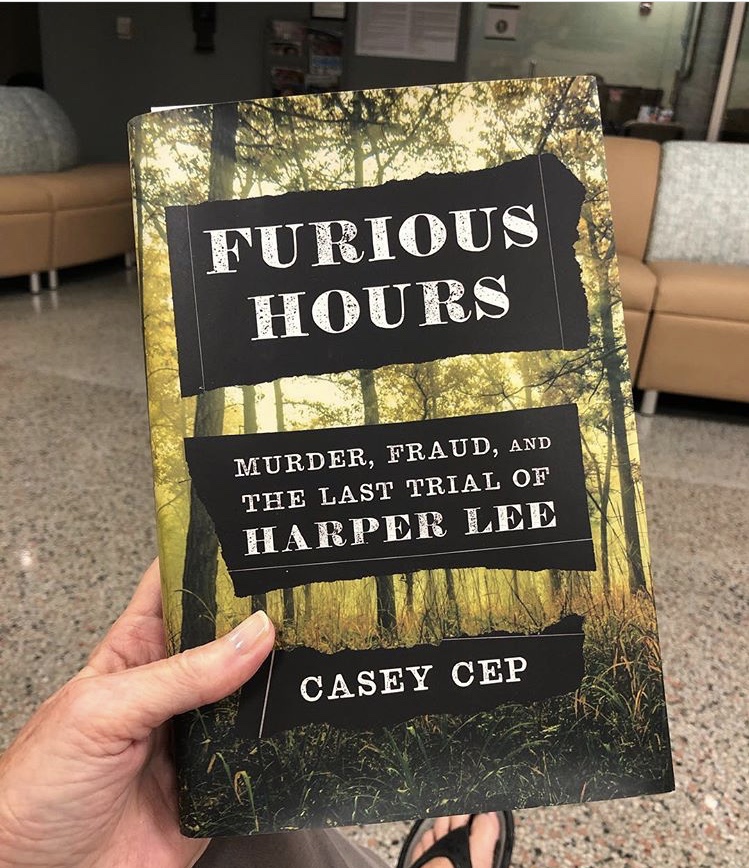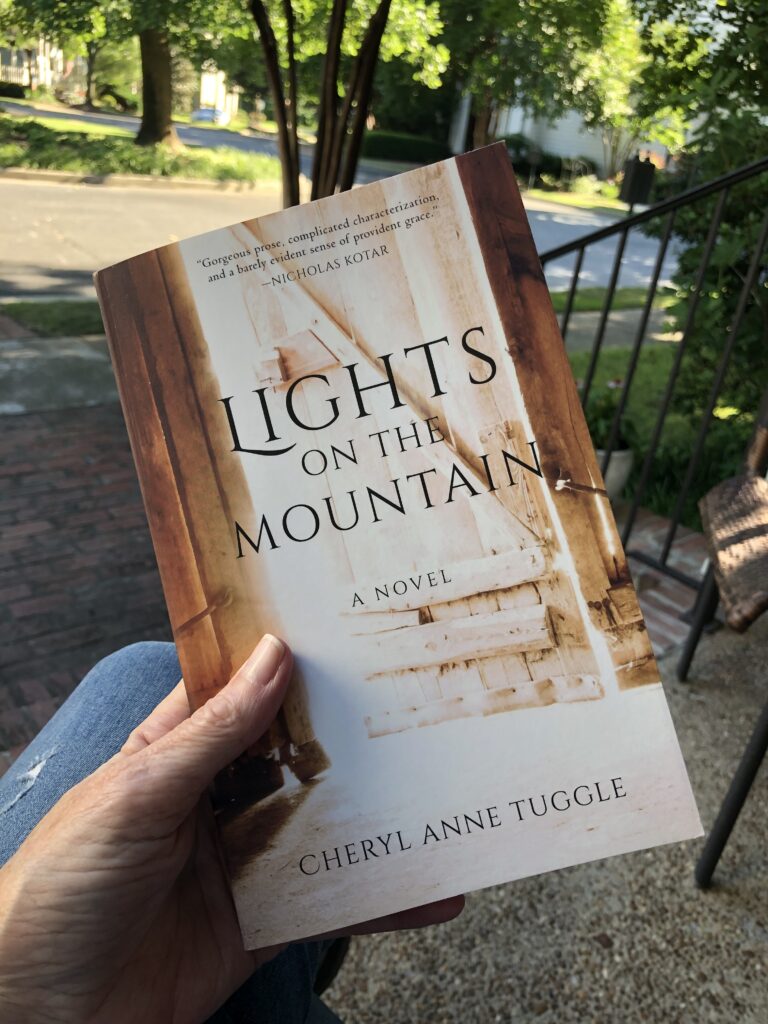Hello, readers! It’s halfway through the month of June and I’ve only got two “summer reading” books to report on. (I’ve been busy getting ready for the launch of my new book, Friends of the Library!)

Furious Hours: Murder, Fraud, and the Last Trial of Harper Lee by Casey Cep is a heavily-researched nonfiction book that explores the murders and trials of a rural preacher in 1970s Alabama, and the involvement of Harper Lee, who spent a year reporting on the case for what she hoped would be her second book, The Reverend.
Cep divides the book into three parts, writing first about the Reverend Willie Maxwell, who was accused of murdering five members of his family to get insurance money, and then about the lawyer, “Big Tom” Radney, and finally, beginning on page 149, she writes about Harper Lee. She doesn’t just write about Lee’s involvement reporting the trial of Robert Burns, the man who admitted to shooting Reverend Maxwell. First Cep gives us several chapters of Lee’s early life and work , helping Truman Capote do research for In Cold Blood, and later the story of To Kill a Mockingbird and Lee’s life as a famous. I have to admit that I skimmed over some of the details in the first two parts of the book, anxious to get to Part Three, “The Writer.” But once I got there, it was worth the wait! So whether you love true crime and appreciate details and heavy research, or you’re just a fan of Harper Lee, this book is well worth the read.

A couple of weeks ago—while I was still reading Furious Hours—I received an email from a publicist at Paraclete Press asking if she could send me a copy of Lights on the Mountain, a novel by Cheryl Anne Tuggle, asking for a review. Why me? Cheryl Anne and I are both Orthodox Christians. And writers. So of course I agreed and dove into her novel last week, asking if Cheryl Anne would also review my new book. First I exchanged an email with Cheryl Anne about our common faith and our work. I told her that my work isn’t “Christian fiction” (my novel or my short story collection) . . . that I’m an Orthodox Christian who is also a writer. It’s my desire to include aspects of Orthodox Christianity in my fiction whenever it fits, but I don’t have an agenda. My writing doesn’t preach or aim at proselytizing. Cheryl Anne said that’s also her approach to writing.
And yet, in a blurb for Lights on the Mountain, Leslie Baynes, Associate Professor of New Testament at Missouri State University, says, “Tuggle may well have birthed a new genre, a decidedly American Eastern Orthodox literary fiction.” As I read those words, I found myself agreeing, and wondering if my novel Cherry Bomb might also fit into that genre, although I intended it to be mainstream literary fiction. Maybe it’s just that there are so few novels published that reference Orthodox Christianity, whereas scenes in Protestant and Catholic churches and references to Christianity in general appear frequently in popular fiction. In Lights on the Mountain, there are scenes during an Orthodox baptism, wedding, confession, funeral, and even the baking of prosfora (bread for communion). There are icons and nuns and a monastery, just as there are in my novel Cherry Bomb. I enjoyed those scenes the most, as I could relate to them. As a city girl, the rural settings for most of the novel aren’t something I’m personally drawn to, but the scenery was beautiful.
That said, what about the writing itself? It’s very literary, with beautiful descriptions of rural Pennsylvania and the lives of the people who struggle to survive there. In fact, the setting almost becomes a character, as it seems to receive as much attention as many of the characters, who are beautifully drawn. Jess, a dairy farmer who loses his brother and parents at a young age. Gracie, a beautiful Russian Orthodox girl who wins his heart and reveals her mystical faith to him by her life. An elderly Hungarian woman who feeds Jess after his parents die. A mentally ill Amish man. A Catholic family with marital problems. And those hippies camping out in the area coming from an “event” in New York . . . set around the time of Woodstock. A colorful cast of characters for sure!
But in the midst of those richly drawn characters and lengthy descriptions of the world in which they live, I felt that the plot fell a little short of the literary prose. The transitions from each (short) chapter to the next were sometimes a little difficult for me to follow. I found myself writing the characters’ names and a brief description of each in the back of the book so I could keep up—much like I did the first time I read The Brothers Karamazov. I did enjoy watching the mystery unfold (who is Tsura?) but the details felt a bit cumbersome. And there was plenty of conflict, but the narrative arc was sometimes hard to follow. It’s only because of that I’m giving the book 4 stars instead of 5.
What’s up next in my Summer Reading queue? I’m starting on Ellen Morris Prewitt’s
new novel The Hart Women. Stay tuned!
